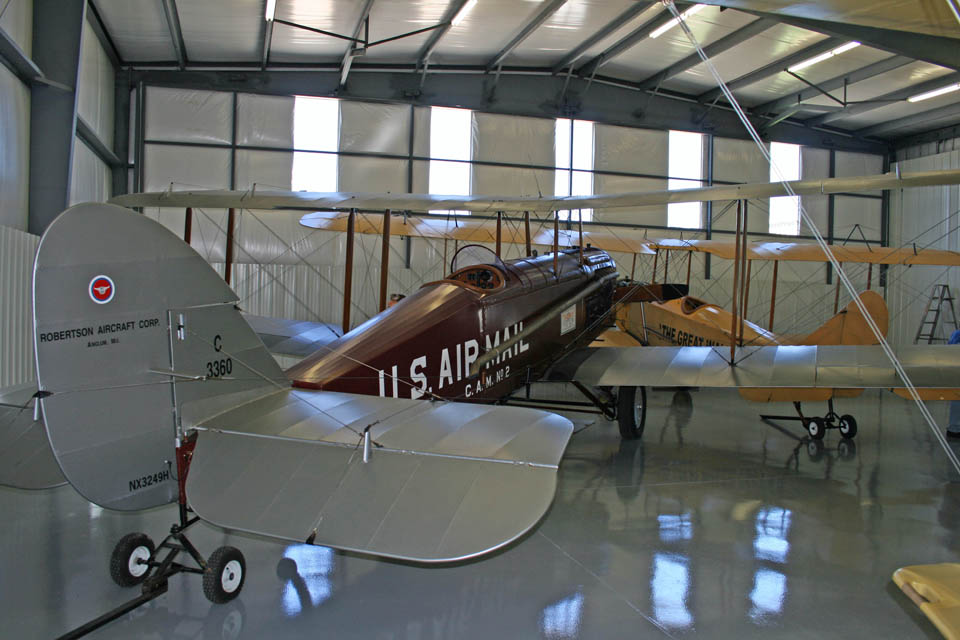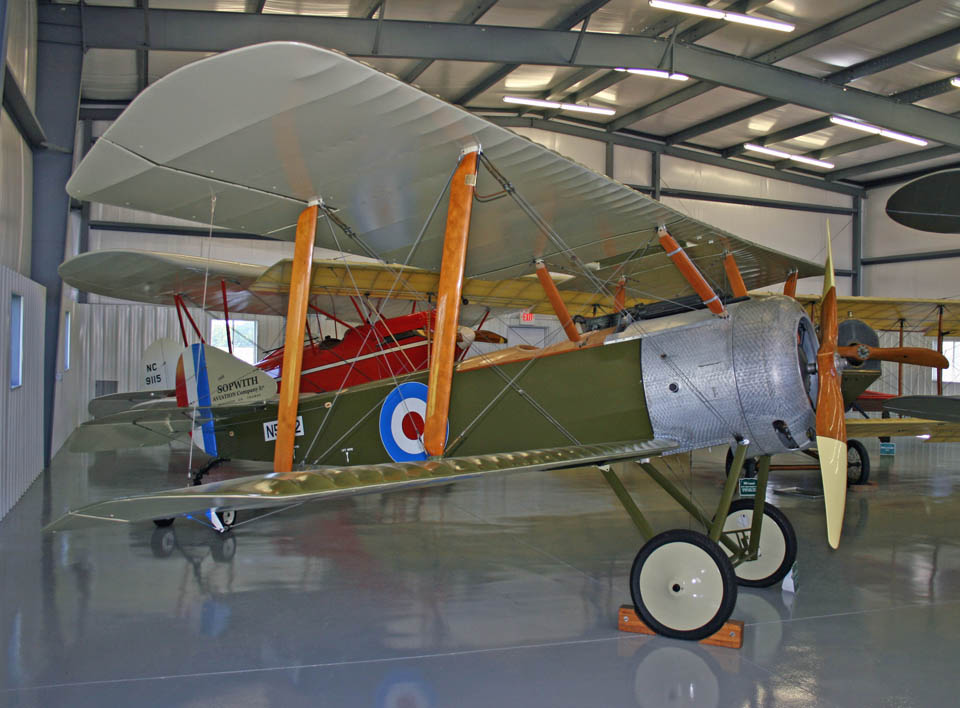N12049 has another interesting
feature...the STA 5 bulkhead was modified to let the seat sit back a
bit further for more legroom. Compare the older photo with the
one from the Fly-In...notice the curve of the cockpit coaming is
flatter. We poked around quite a bit, feeling under the
turtledeck at the structural modifications that had been necessary.
As the day went on, more and more Fly Baby guys showed up, and we had a
great time standing around and talking about our favorite airplane.
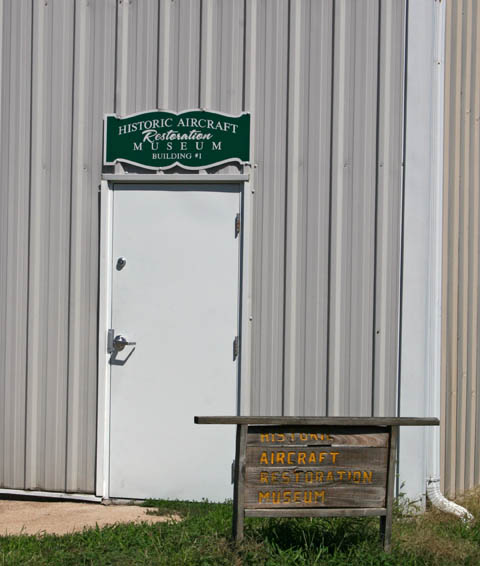
When the problems had arisen at Sparta, Brian had to
change venues quickly. There wasn't much time to make
arrangements at another local field, but fortunately the
Midwest LSA show had been
scheduled for Mt. Vernon...and that's why we ended up there. This
turned out to be serendipitous. We didn't have to arrange
insurance, figure out how to handle parking or transportation, arrange
food and drink, etc. Brian talked to the LSA folks, and they were
glad to host us...and they were great hosts.
It not only gave us other interesting airplanes to wander around and
poke at, it let us expose more people to the concept of the Fly
Baby. I went into my full fly-in mode (Drew can attest to what
THAT'S like!) and spent much of the day explaining the aircraft's
features and history.
They had a very nice place for my presentation, and we had more than
ten people show up. I talked for almost an hour and a half, by
which point the show was starting to close down. I raffled off a
set of Fly Baby plans, and Bob Hamilton won. Gives him a
maintenance manual for his airplane. Most folks had to head home,
but me and three other Fly Baby nuts went into town and had a good meal
at a local restaurant.
Before we broke up for the day, I mentioned that I had most of Sunday
free (my plane didn't leave 'til 5) and was planning to go to a local
aviation museum. Bob suggested that I go to Creve Coeur airport
instead, home of the
Historic
Aircraft Restoration Museum.
We spread the word, and a bunch of us showed up at Creve Coeur the
following afternoon.
The museum is unprepossessing, from the outside...just four gray
hangars without ground-level windows. As you can see, no glass
entries, no fancy signs.
But inside...sheesh!
Some very, VERY cool airplanes there. Almost all biplanes through
the 1930s, with a ton of Wacos. Al Stix, the museum director, was
our tour guide. He had flown most of the airplanes, and gave us
vivid descriptions of what they were like to fly. Most of these
airplanes were not pleasant or easy! And most of them are kept in
flying condition. Not at the stage where they can just roll them
outside of the hangar and fly them, but sufficiently equipped and
prepared that just a few hours' work would do it. They get
requests all the time for airplanes for movie work...but the producers
invariably want them to fly the planes to California for a few hours of
shooting. Pretty involved trip, for most of these planes.
I had only a bit of time, and saw just two of the hangars. The
two that impressed me the most were the DH-4 (the only airworthy one in
existence) and the Sopwith Pup. DeHavilland always made
nice-looking airplanes, and the "Flaming Coffin" was no
exception. In the picture below, the Standard J-1 from the movie
"The Great Waldo Pepper" can be seen. Brian Kissenger (the
silver-tongued rascal) sweet-talked his way into getting permission to
sit in both aircraft.
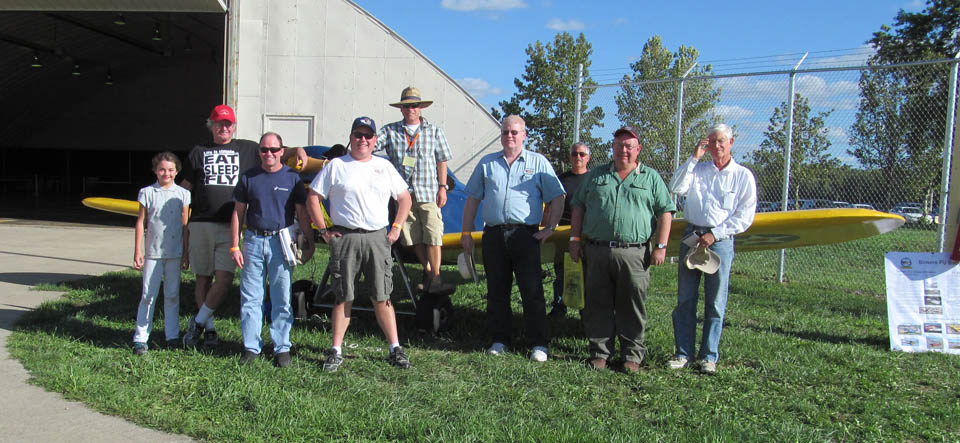

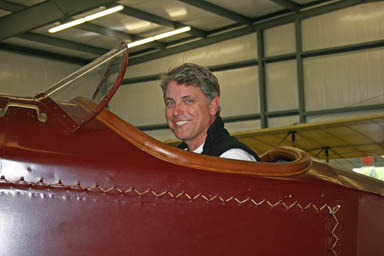 While we all hope to be around for more Fly Baby Fly-Ins
for years to come, we reminded the youngest attendee, 10 year old Amber
“Ajax” Aanstad, of the importance of this day and to pass the Good News
of the Pete Bowers design for many generations to come.
While we all hope to be around for more Fly Baby Fly-Ins
for years to come, we reminded the youngest attendee, 10 year old Amber
“Ajax” Aanstad, of the importance of this day and to pass the Good News
of the Pete Bowers design for many generations to come.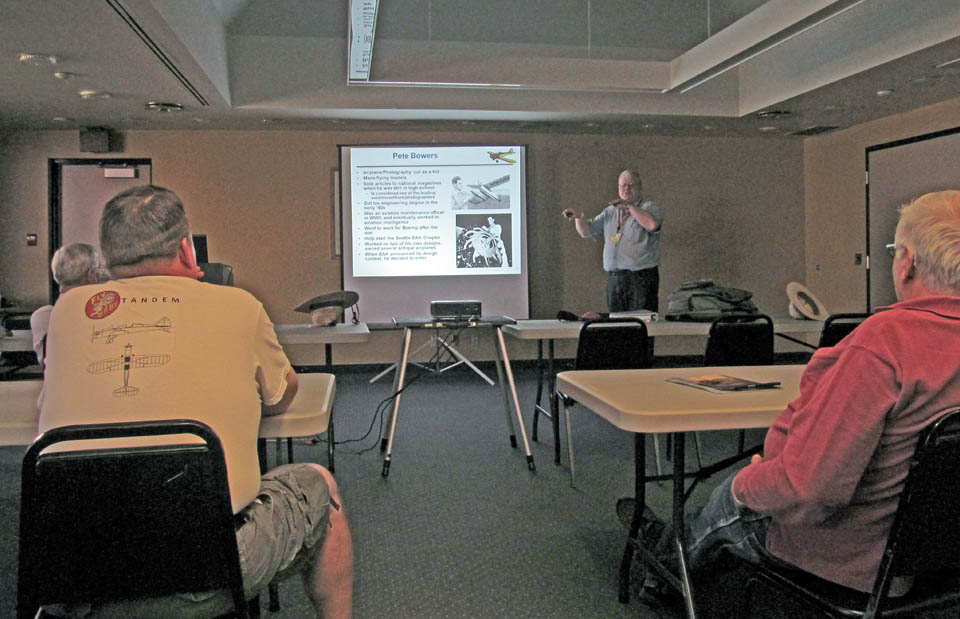
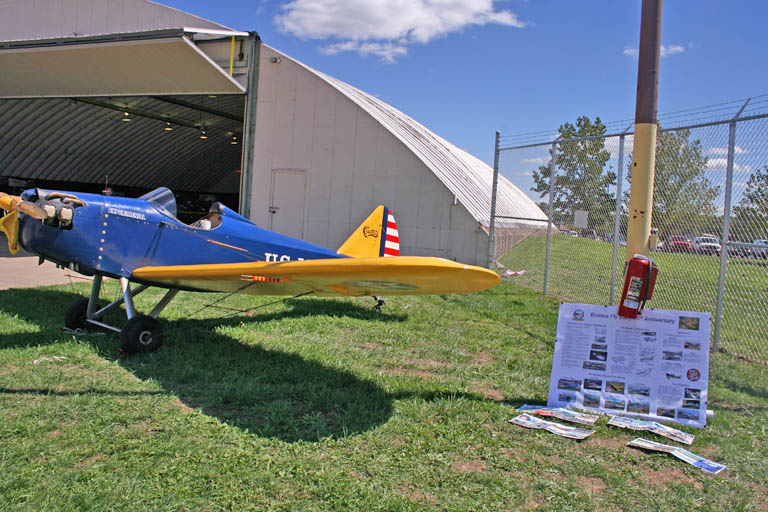
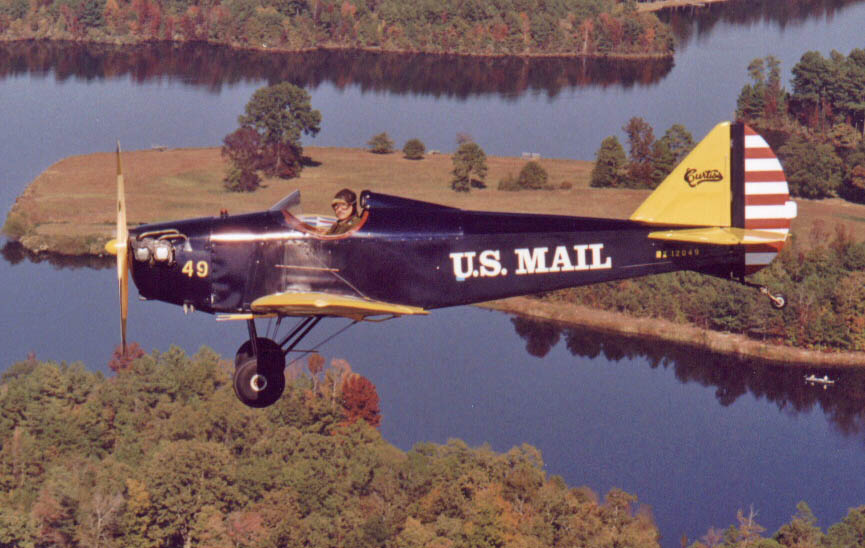
 When the problems had arisen at Sparta, Brian had to
change venues quickly. There wasn't much time to make
arrangements at another local field, but fortunately the Midwest LSA show had been
scheduled for Mt. Vernon...and that's why we ended up there. This
turned out to be serendipitous. We didn't have to arrange
insurance, figure out how to handle parking or transportation, arrange
food and drink, etc. Brian talked to the LSA folks, and they were
glad to host us...and they were great hosts.
When the problems had arisen at Sparta, Brian had to
change venues quickly. There wasn't much time to make
arrangements at another local field, but fortunately the Midwest LSA show had been
scheduled for Mt. Vernon...and that's why we ended up there. This
turned out to be serendipitous. We didn't have to arrange
insurance, figure out how to handle parking or transportation, arrange
food and drink, etc. Brian talked to the LSA folks, and they were
glad to host us...and they were great hosts.